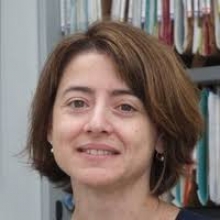MSE 298 Seminar: (Zoom) Back to the Future - Time Travel to the Ancient Nanoworld of Beautiful Materials

Department of Physics
Universitat Politecnica de Catalunya (BarcelonaTech)
Via Zoom Meeting ID: 995 8022 3426 Password: 587901
Abstract: Nanoscale materials are known to behave differently than at macro scale, mainly due to the large surface-to-volume ratio and spatial confinement. Nanoscale composite materials show properties related to those of the constituent nanomaterials, but also to the morphology of the composite structure. Nanoparticles and nanostructures were produced in ancient times to obtain beautiful objects. Their discovery and development based in experimentation involved a true nanotechnology. Among them, lustre decorations and Jun glazes so uniquely combine beauty and complexity, science and history, technology and art, appealing to scientists, potters and historians. This seminar will try to unveil the science behind the beauty. Lustre, a surface nanometric layer of metallic nanoparticles in glass, was first produced in the Islamic golden era. It involves a scientifically advanced method of production, which is able to trigger the optical properties. Jun glaze, a microstructured glass nanostructure resulting from high-temperature liquid immiscibility, was first produced in the northern Song dynasty period in China. The glazes show subtle ivory to blue colours, jade-like smoothness, medium lustre, semi-opacity and a unique sky-like tri-dimensional appearance.
Bio: Trinitat Pradell, Ph.D. (University of Barcelona), is a professor in the Department of Physics at the Universitat Politècnica de Catalunya (BarcelonaTech) and member of the materials characterisation group dedicated to the production, stability and characterization of metastable materials and nano and microstructures embedded in amorphous materials. She has worked for more than 25 years on the analysis of historical and artistic materials, with focus on glazes, glass and decorative layers with outstanding optical properties. Her main interest is the identification of the materials and processes followed in the production of objects to recover ancient technology. Specific sample preparation to allow for minimal invasiveness together with a set of non-destructive microanalytical techniques in combination with replication is her choice for the study of micrometric and submicrometric decorative layers.
Share
Upcoming Events
-
MSE Special Seminar: Designing Sustainable Soft Matter from the Molecule Up
-
EECS Seminar: On-device Contextual AI – Challenges and Opportunities
-
MAE 298 SEMINAR: Control and Estimation of Turbulent Shear Flows using Modal Analysis
-
CBE 298 Seminar: Enabling Inverse Design of Molecules to Drive Defined Physiological Outcomes - A Critical Role for Systems Modeling in a Data-Driven World
-
MSE Special Seminar: Organic Semiconductor-incorporated Perovskites (OSIP) – A New Family of Hybrid
